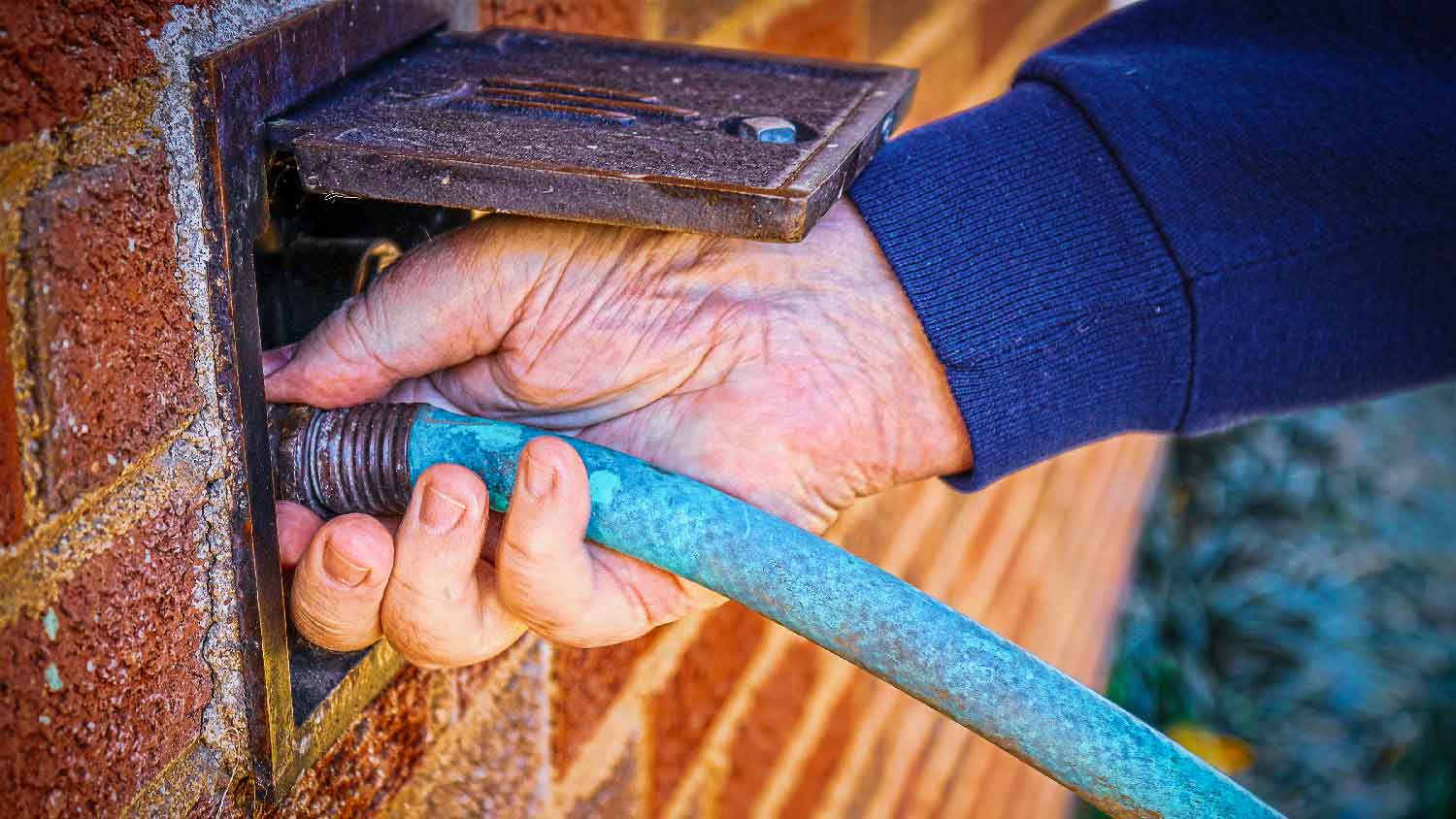
A French drain costs around $9,250 to install, but several factors will determine the final price you pay. Learn the cost to install French drains in this guide.
Lawn looking less than lush? Change the irrigation valve.


Owning an irrigation system comes with a new set of responsibilities. Understanding common repairs, including how to change your irrigation valve, keeps your yard looking healthy and prolongs the life of your sprinkler system.
Here’s how to diagnose if your irrigation valve has an issue and how to swap out the valve yourself. Don’t hesitate to hire a sprinkler repair professional if you need assistance with this task.
Before you can change an irrigation valve, it’s important to understand which specific valve you’ll be changing. An irrigation valve uses a timer to release and distribute water from the water source to the irrigation lines for even, consistent watering.
There are two main valves: a master valve, where water enters the irrigation system from a source, such as an outdoor spigot, and an irrigation valve that controls water flow to each node or irrigation line. The irrigation valve, not the master, is what you’ll want to change for this project.
Before you disconnect anything in the sprinkler system, turn off the water supply connected to the system. This ensures you won’t be drenched when you finish the project.

Pro tip: Before disconnecting the wiring, take a picture of the system. That way, you can refer to the photos for reassembly.
Remove the wire caps and disconnect the wires connected to the irrigation valve. This could be anywhere between two to four wires connecting it to the system.
You’ll need to cut the pipes connecting it to the system to remove the entire irrigation valve. Cut off the valve just after the PVC adapters are connected to the system. You’ll still be able to connect the new valve with new pipes and adapters.
Before installing the new valve, connect it to adapters (similar to the ones you just cut). Install the “male” PVC adapters to the valve using Teflon tape to ensure a snug fit.
Lower the new valve into the system, attaching it on both sides using PVC glue. Swipe the glue along the insides of the adapters attached to the new valve, then attach them to the irrigation system pipes.
Once you apply the glue, take care to work quickly; it sets fast!
With the new valve in place, it’s time to reconnect the wiring. Refer to the photos you took before disassembling the valve and copy the connections to ensure everything is in the right spot.
With the new valve installed, it’s time to check your handy work. Turn the water back on slowly to test the system and check for leaks.
If the sprinkler leaks even when the timer is off or releases water at a low pressure after changing the irrigation valve, it could be an issue with the solenoid valve, an electronic part of the irrigation valve. Check your sprinkler make and model to order a replacement solenoid valve, then shut off the water supply and master valve before replacing the solenoid.
To replace a solenoid, you’ll need to detach the wire connectors leading to the solenoid and turn the valve counterclockwise to remove it from the sprinkler valve. Then, insert the replacement solenoid and reconnect the wires, finishing it off with wire connectors. Because wiring sprinkler valves can pose shock risks, it’s best to leave this repair to the pros.

This project involves dealing with water lines and electrical wires. If you wire the valves incorrectly or don’t get the new valves on snugly enough, you could risk frying your sprinklers, shocking yourself, or flooding your lawn. Instead, a local sprinkler repair pro can do the work safely and minimize costly damages to your irrigation system.
From average costs to expert advice, get all the answers you need to get your job done.

A French drain costs around $9,250 to install, but several factors will determine the final price you pay. Learn the cost to install French drains in this guide.

Discover the cost to winterize a sprinkler system, including average prices, key cost factors, and tips to save. Learn what impacts your estimate and how to budget.

Discover yard drainage cost estimates, including average prices, key cost factors, and tips to help you budget for your yard drainage project.

Do you notice any signs of drainage problems? Here are some foundation drainage questions you can expect to discuss with a pro before they work on this project.

Low flow irrigation systems are a great way to make sure you’re keeping your lawn watered while being conscious of how much water you’re using.

Irrigation can help your lawn, flower bed, and veggie gardens thrive. But what is irrigation? Follow this guide to learn how irrigation works.